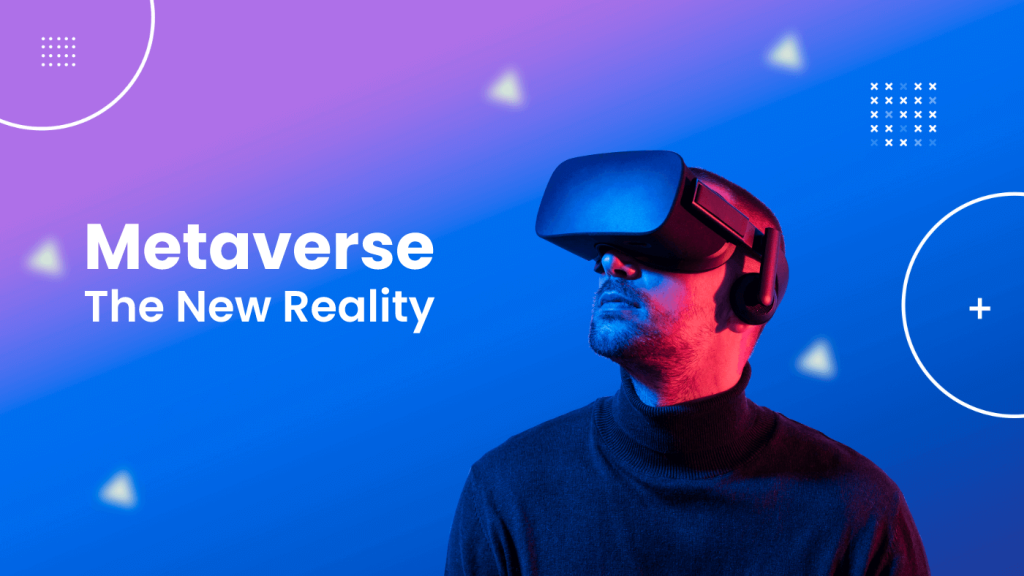The metaverse is the meeting point of the real and virtual worlds. The science fiction book “Snow Crash” from 1992 was the first to use the phrase “metaverse.” It was coined by author Neal Stephenson to describe a virtual, three-dimensional environment where programmed avatars engage in social interaction. Although it resembled a sci-fi fever dream, Stephenson’s portrayal was accurate: The term “metaverse” has come to represent the future of the internet 30 years after it was first coined.
Quick Links
Imagine the metaverse as a collective cyberspace with its own social norms and economic system. Through augmented reality (AR) and virtual reality (VR), users can enter the metaverse. AR employs computer-generated information to enhance real-world perception, while VR uses computer-generated input to fully immerse users in the virtual world.
This new area reflects how consumers’ preferences are shifting toward remote, convenience, personalization, and immersion. Brands can benefit tactically from the social media content writing because it creates opportunities for: hyper personalization and real-time relevance.
• Increased sensory perception
• Community development
• Special storytelling
• Thorough customer data
The aforementioned ideas have tremendous potential for elevating a brand’s recognition among the target market. Here, there is a huge potential for direct revenue production without the use of intermediaries.
Metaverse Marketing Strategies
The metaverse has arrived and will stay. A few recent technology advancements include augmented reality (AR), virtual reality (VR), NFTs, 3D gaming, Web3, and block chain. Many companies are already getting ready for the metaverse and thinking about how it may impact their marketing potential. At least five key marketing tactics have been discovered for businesses establishing their brands in the metaverse.
1 Brand Positioning
The ability to experience the virtual world as never before is the metaverse’s greatest benefit. In actuality, it creates a bridge between the real world and the other virtual realms. Utilizing immersive storytelling, brands can use this to position themselves in an authentic way. They can design interesting scenarios that encourage people to interact with the product and produce a memorable experience.
This is poignantly illustrated by Nikeland, a virtual playground Nike created on Roblox. Users can engage in a variety of minigames here that incorporate authentic bodily motions like long jumps, etc. Don’t be surprised if Nike allows people to co-design things with them tomorrow and offers unique sneak views of products in Nikeland.
Making micro-content in the form of excellent bite-sized movies is one of the best metaverse marketing strategies, and it may help them establish a desirable reputation. Short lists, reels, and TikTok videos can all aid in getting viewers to the home page. Micro-content like GIFs and memes also contribute to maintaining the buzz.
2 Selling via live video
Live video streaming combined with online selling is what live video selling is all about. Brands may employ live video selling to rapidly boost their brand’s value and provide users with more convenience. These hybrid marketing techniques may also make use of AI to process real-time data. By forecasting the right course of action to move the lead through the sales process, this data can help the process even more.
3 Individualized Offer
NFTs, collectibles, and other items can be used as practical marketing tools in the metaverse. The ability to promote to users of the metaverse through the use of lookalike avatars, valuable collectibles, and purchasing virtual assistance as an extension of one’s identity provides marketers with a special position. Additionally, they can employ AI to respond to user emotions and offer increased relevancy and unparalleled convenience.
4 Community building
Metaverse is decentralized. Interoperability, native tokens, and user consensus are some of the crucial terms in this sentence. Brands now have the ideal opportunity to use the strength of the online community to deliver their customers a seamless experience. Co-creating content can benefit both the company and its clients while enhancing brand recognition and reputation.
5 Locations for Real Estate in the Metaverse
Real estate investing is arguably one of the most discussed metaverse marketing tactics. Possessing your own area in the virtual world enables you to offer users unique experiences. Fashion presentations for virtual games in the metaverse are being organized by brands like Gucci, Nike, and Louis Vuitton.
Brands have the ability to have a carefully managed presence on the platform when they own land in the metaverse. Users can visit, interact with, and experience brand-exclusive moments.
Recognize Your Target Market and Anticipate Future Demands
Users can interact in the metaverse in a variety of distinctive ways. They are free to explore farther, interact with the goods and services, and obtain an inside-out perspective by gazing through them. Brands will be able to gain crucial insights into consumers’ behavior since the sensory interaction in the Metaverse generates priceless emotional data. By identifying the group’s potential needs in the future, these insights can help metaverse marketing initiatives.
Another great method for gathering real-time data that may be used to provide customized services is through hyper personalization in the metaverse. Future launches can be expertly curated using these insights and the reaction to the customized outcomes.
It’s more complicated than just checking into a virtual location and adding things to the cart. Brands can embark on a road of incredible growth with the right minds on board while also ensuring their future for the upcoming wave of digital makeover for sales and marketing.

